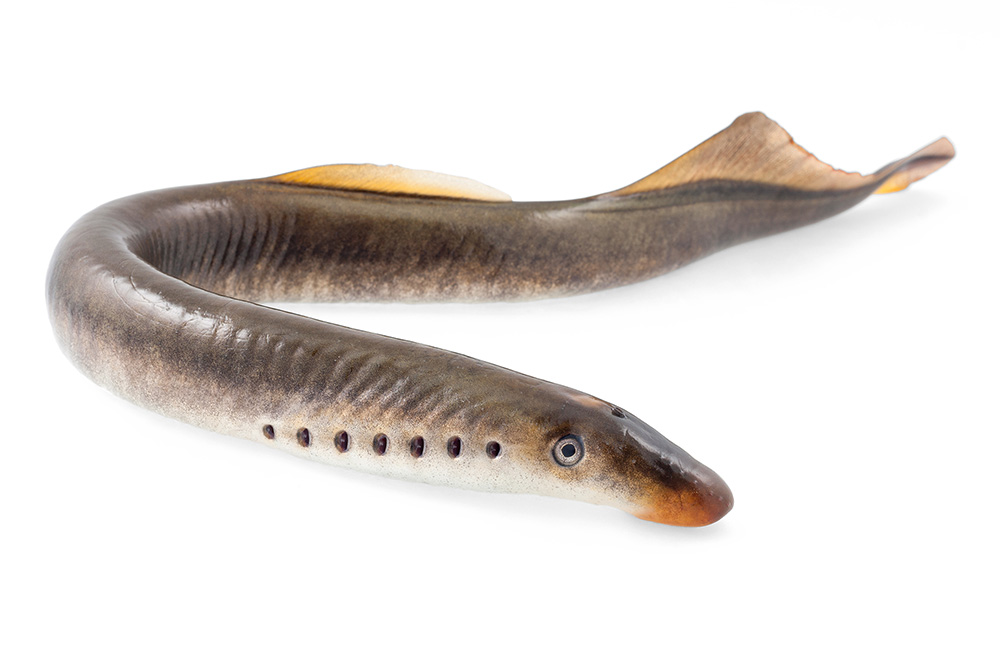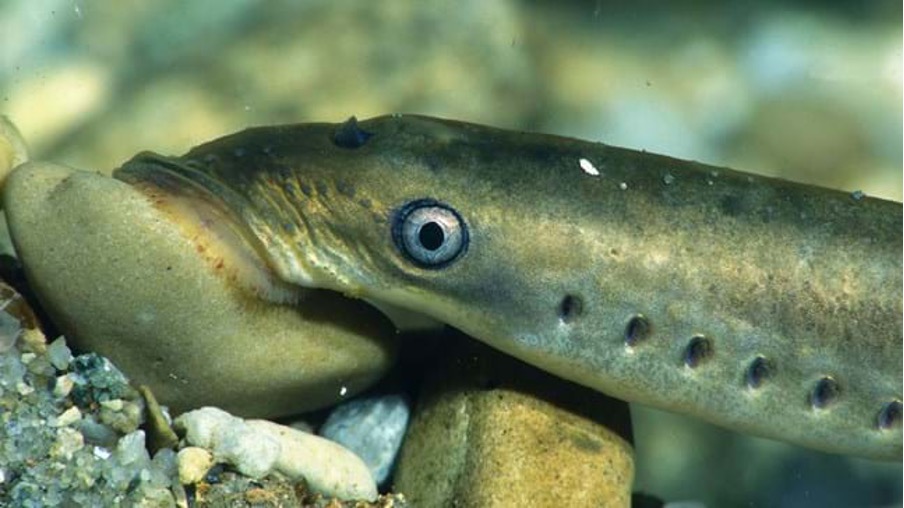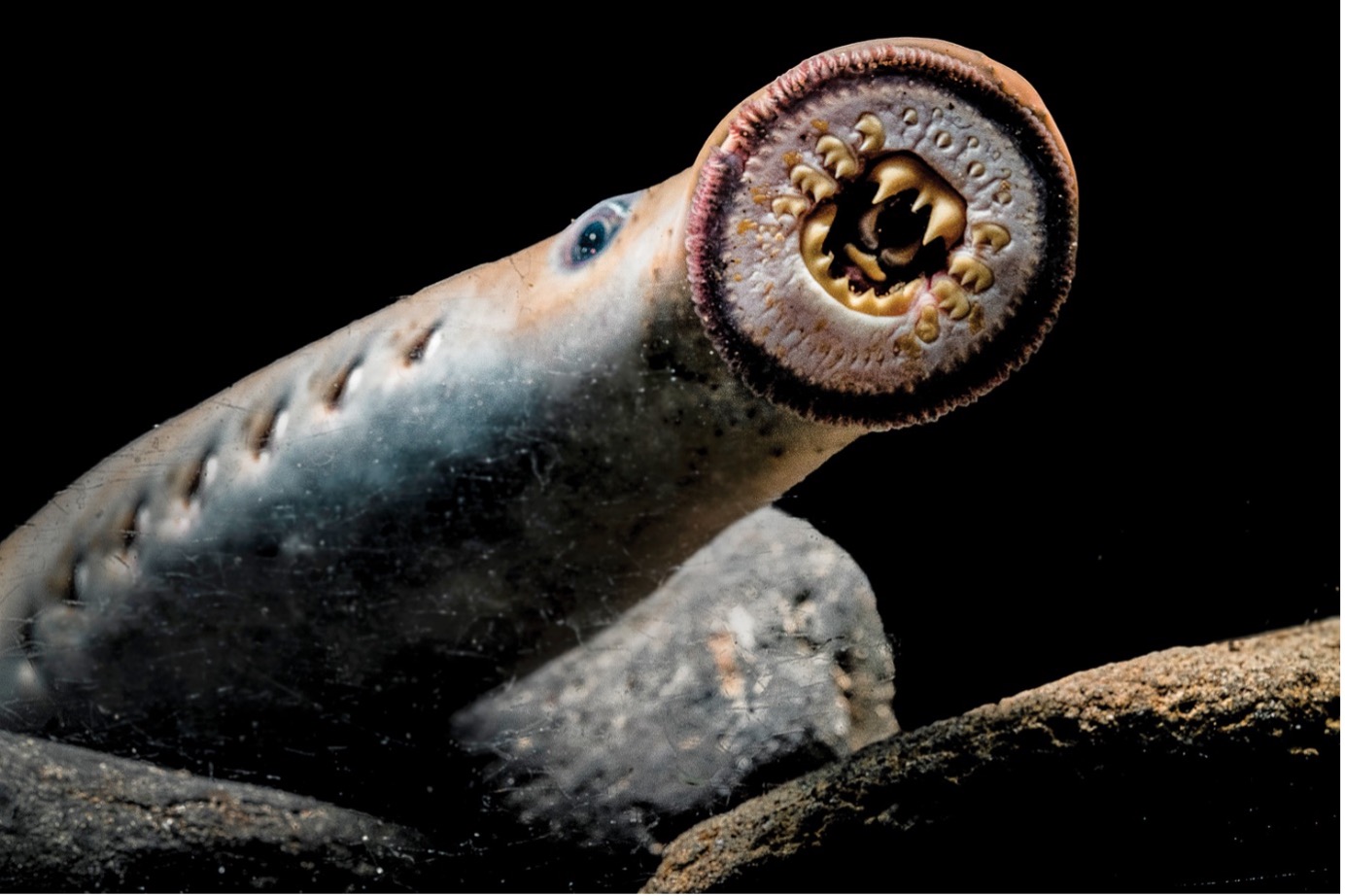By Fanis Michalakis,
Lampreys are one of the two kinds of fish that don’t have a mouth, alongside the hagfish. Instead, they have a disc-like opening that allows them to capture their food. Lampreys have surfaced in the Internet with many images showing their “mouths” because it looks terrifying and painful. There are 38 known species and some of them live in freshwater, some in saltwater and some live in saltwater but migrate to freshwater to reproduce.
Lampreys are different morphologically than the typical fish. They don’t have scales and instead have slimy skin with seven gill slits for breathing and dorsal and caudal unpaired fins. Lampreys don’t have bones and instead use cartilage to create their skeleton. Their feeding ecology has been studied thoroughly. Many of the lamprey species are parasites of other big fish. They use their sharp teeth to drill a hole on the body of their host and drink its blood. Others also eat the flesh of their victims and can even reach for internal organs. Some other species chose a herbivore lifestyle and instead decided to feed on algae growing on rocks. Their teeth then help them scrape their food and their mouth also works like a suction cup, allowing the lamprey to hold on to the sea floor and rocks when it is going upstream in rivers.

Lampreys are studied thoroughly for their placement in the phylogenetic tree of life and their role in evolution. Scientists are still unsure of their placement compared to other fishes. One could argue that lampreys and hagfishes are more closely related as the “cyclostomes” (meaning that they have an oral disc as a mouth) with the outgroup being the “gnathostomes” (fish with mouths). On the other hand, lampreys could be classified as “vertebrates” because even though they don’t have a bony spine, they have cartilaginous structures called arcualia arranged above the notochord, so they have a similar structure compared to that of the true vertebrate animals. This means that the gnathostomes and lampreys could be sister groups forming the group “vertebrates” with the outgroup being the hagfishes. However, most evidence points towards the first scenario, so this is the current hypothesis moving forward. In 2006 two lamprey fossils were found that shed light to the evolution of lampreys. For a long time, people believed that the lampreys evolved form the “Ostracoderms” which were armoured and jawless fish, but these new discoveries suggest that lampreys diverged from the lineage before the ostracoderms, meaning that although jawless, Ostracoderms are more closely related to gnathostomes than the cyclostomes are. Because cartilage is harder to preserve than bone, we don’t have many fossils to study the evolution of lampreys and a big gap in the fossil records prevents us from piecing together a complete story with a linear path.

Lampreys are also studied for their immune system. They have traces of what would eventually offer the acquired immune system to jawed animals but they themselves lack that trait. This is a stage of evolution that is interesting because you can find some necessary elements for the development of a new trait, which help scientists learn the mechanisms that led to its creation. Since they are one of the two fish that don’t have jaws, they are a model for the study of that evolutionary leap as well as all the changes in the genes and their regulation.
Apart from research, lampreys are used as food in many countries, both in ancient times and today, although their skin and mucus are toxic and therefore require thorough cleaning before consumption. The carnivorous species are also pests for many countries, and they can follow rivers and gain access to new areas and spread quickly. This is why countries use special barriers that block their upstream migration. Lastly, lampreys appear in folklore in myths and stories as eels with nine or eight eyes (their real eyes, nostrils and gill slits in each side for the nine eyes and the real eyes and gills for the eight eyes as well as literature and in the TV show “The Borgias” in season 3 episode 5).
References
- Osório, J., Rétaux, S. The lamprey in evolutionary studies. Dev Genes Evol 218, 221–235 (2008).




